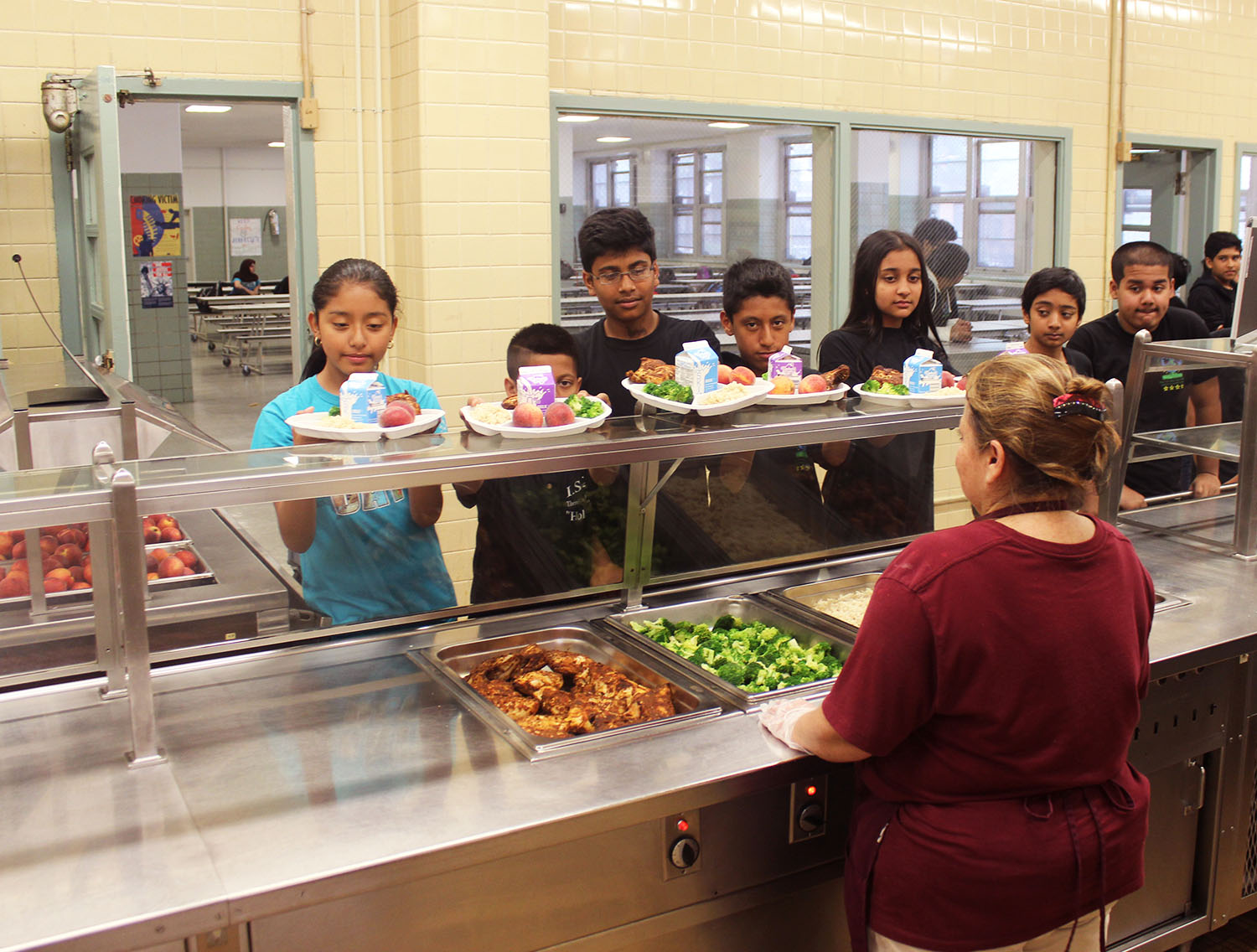School lunches in Boston may change for the better after Boston Public Schools (BPS) joined several of the largest school districts in the country last month as a member of the Urban School Food Alliance.
The alliance, formed in 2012, aims to increase the quality of food at schools while keeping costs down, according to its website.
BPS Executive Director of Food and Nutrition Services Laura Benavidez said her goal was to have the school district join the alliance once she arrived in Boston from Los Angeles more than a year ago, where she was a board member of the alliance for her school district.
Joining the alliance was made possible by a $20,000 grant from the Henry P. Kendall Foundation in Boston.
Schools in the alliance talk monthly about ways to leverage their buying power to provide locally sourced, nutritious meals to students at a good price for the district. Benavidez said examples range from antibiotic-free chicken to whole grain, low sugar cereal for students.
“It’s important because we want to make sure that our children have the best meals possible,” Benavidez said, adding that seven out of 10 BPS students live below the poverty line. “This may be the only meal they get, so we want it to be the best meal,” she said.
Benavidez said the alliance’s combined “purchasing power” makes it possible for membership schools to free up their budgets to spend more on their school lunch programs.
“It’s extremely important because we have a very small budget to prepare meals,” Benavidez said. “Food and labor are the largest costs so you have to make sure with the costs you have that you utilize the procurement process in a strong way so that it’s beneficial.”
Money saved can go back to the food itself, but can also be in other ways to improve the school meal program, Benavidez said.
She said the types of foods that the district will be purchasing may depend on initiatives discussed within the alliance.
“We already as a district have menus set so right now we have our processes in place,” Benavidez said. “You may not visually see anything different with the lunches. Until we decide where we would reallocate those other additional resources it’s hard to say.”
Since joining the alliance in December, Benavidez said discussions have been around contracts for spices and healthier cereals in schools. She said plans to promote how being part of the alliance is impacting school lunches for students is a goal the district is working towards.
Learning what types of foods the alliance is trying to get in to schools at a fair price is also on the agenda.
“That’s the next phase: signage and communication,” Benavidez said. “We’re exploring a lot of our opportunities … we want to see what those initiatives and objectives in the alliance are and what the alliance is utilizing now.”

Leave a Reply
You must be logged in to post a comment.